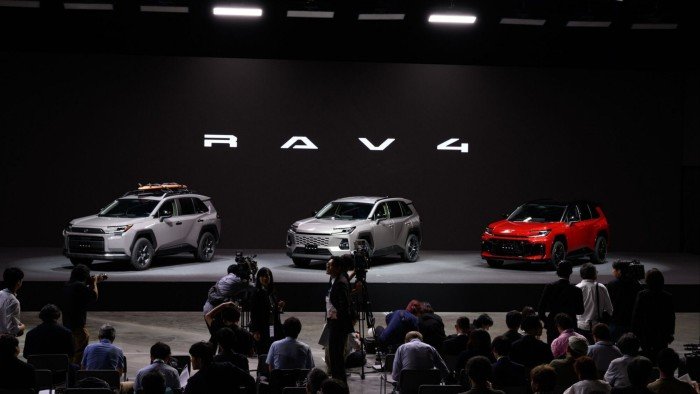Unlock the Editor’s Digest for free
Roula Khalaf, Editor of the FT, selects her favourite stories in this weekly newsletter.
Toyota will deliver a homegrown operating system with one of its best-selling vehicles by next March, in a bid by the world’s largest carmaker to catch up with Tesla and Chinese rivals’ software lead.
The in-house system, known as Arene, will provide over-the-air updates to help drivers with manoeuvres such as lane keeping and parking, as well as multimedia and entertainment features. It will debut in the next-generation RAV4 sport utility vehicle.
The software platform is central to Toyota’s efforts to lay the groundwork for autonomous driving, accumulate driving data and catch up with competitors that have banked on the provision of digital services — paid and unpaid — to add value to cars.
It is the first fruit of seven years of labour by the entity that became Woven by Toyota, a subsidiary established by the automaker to boost software development competitiveness and break from its slower-moving car manufacturing culture.
“The whole world, including Woven, is looking at what’s going on in China,” said John Absmeier, chief technology officer of Woven. “We have to figure out how to maintain a competitive advantage in this market going forward, and Arene will definitely help with that.”
While Japanese automakers excel at manufacturing robust cars, they have fallen behind on software. Toyota was ranked third-bottom last year on Gartner’s digital automaker index, which tracks the potential for groups to monetise their software services. Electric-vehicle makers such as Tesla and China’s Nio and Xpeng are far ahead.
Other carmakers, including Volvo Cars and Mercedes-Benz, have also experienced software glitches on new product launches, while Germany’s Volkswagen has partnered with US EV start-up Rivian to improve its software following setbacks with its internal division.
Arene’s debut in one of Toyota’s most popular models, which comprised 10 per cent of global sales last year, represents the company’s vote of confidence in its technology, as any problem could raise the risk of a wide recall.
“How software meets hardware is a big challenge in terms of cultures,” said Jean-François Campeau, head of Arene at Woven. “It’s two different worlds.”

Woven is at the centre of Toyota’s ambitions to become a so-called mobility company that can generate revenue outside vehicle sales, but its efforts have faced big changes, including the replacement of its CEO, former Google executive James Kuffner, with an executive from its supplier Denso in 2023.
Toyota is yet to release a more ambitious centralised architecture linked to four main areas that the software could be applied to — assisted driving, infotainment, body features such as door locks and the power train.
Instead, Arene will be applied only to the first two, and the release of a fully-fledged operating system will be achieved at a later date. Toyota said Arene’s development was on schedule, but analysts said the features available at launch seemed less ambitious than expected.
Takaki Nakanishi, an automotive analyst, said the limited application meant Arene was far from cutting-edge compared with software developed by rivals. Tesla’s latest update, for example, allows users to charge their phone after exiting and locking the car and makes the headlights adapt more to other drivers.
“It doesn’t feel like [Toyota is] challenging to develop complex software,” said Nakanishi.
Akihiro Sarada, president of Toyota’s software development centre, said the company had made a large upfront investment and “gradually the development costs per vehicle will come down” as Arene is applied to other models.
Collecting vast amounts of data through the platform will be crucial for Toyota’s pursuit of autonomous driving and reducing the potential scenarios that lead to traffic accidents.
Absmeier said the RAV4 would be able to collect a wide variety of data given the SUV is driven in emerging markets. By contrast, Tesla cars are mostly found in cities of developed economies with charging infrastructure.
“It’s not about volume, it’s about diversity,” he said. “That’s more important.”

